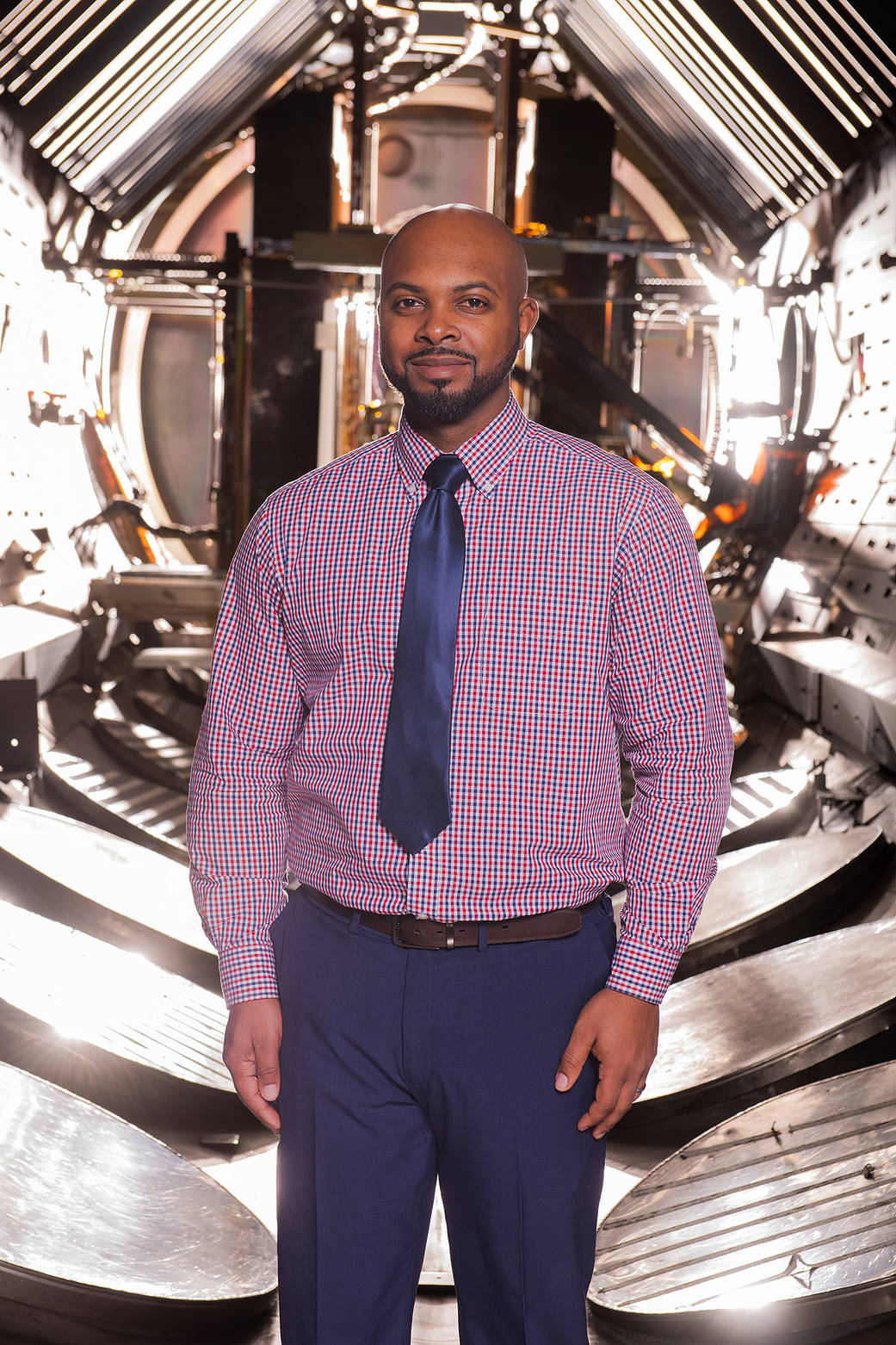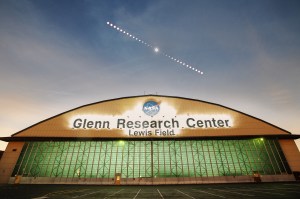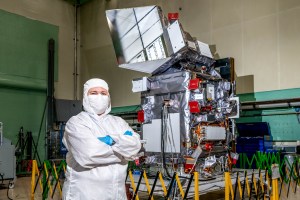Ernest Williams has played a key role in the X-59 Quesst mission as an electrical engineer at NASA’s Glenn Research Center. Quesst aims to reduce the loudness of the sonic boom and collect data that could make supersonic flight over land possible.
Williams prepared the signal conditioning and high-accuracy data acquisition systems for the X-59 test article, performed dynamic strain and temperature measurements, and operated test conditions for X-59 model aeronautical simulations in the 8×6 Supersonic Wind Tunnel. During the simulation flight, Williams troubleshot electrical issues and analyzed how the X-59 model reacted in the wind tunnel to predict how the X-59 aircraft would perform in the air.
While growing up, Williams’ heart wasn’t always set on becoming a NASA engineer. He was an honor roll student at Euclid High School, but his focus wasn’t on his academic studies.
“I just wanted to play basketball,” said Williams “I’d play in the snow and the rain. I had letters from colleges recruiting me to play basketball, but then I had a heart disease and couldn’t play anymore. I had to change everything.”
Williams saw the road to college through a basketball scholarship disappear, but this didn’t stop him from pursuing higher education. Fortunately, a high school essay contest helped guide him on the next path to take.
“My parents didn’t have much money for me to go to college, but my high school had an essay contest,” said Williams. “Whoever won the essay got $40k for college. I didn’t like writing, but I decided to do it and I won.”
Williams attended the University of Akron to pursue an electrical engineering degree, but during his college career, he was diagnosed with cancer.
“I had Hodgkin’s Lymphoma during undergrad, so I was going through chemo and radiation. I recovered and I graduated, but then I had a massive stroke,” said Williams. “I lost all my comprehension. I had to learn how to read again. The only thing I could do was math,” said Williams.
His parents took turns staying with him in his Akron apartment, helping him learn and teaching him to read again.
“I had to go through speech and occupational therapies — which helped — but my confidence was gone,” said Williams. “Everything I learned in college disappeared when I had the stroke. It was like having a hard drive on a computer that was wiped out. But I am extremely driven. I don’t like to fail.”
This motivation and drive helped Williams teach himself to read again at 26 years old. He was hired to teach electrical engineering at a local community college, which helped him learn many of the lessons he lost with his stroke. When Williams felt prepared to enter the workforce again, he worked for various computer companies, but he had a passion for space.
“Back in elementary school, we’d go to the planetarium, and I just loved being there when the lights would go out and I’d look at the fake stars and all the constellations,” said Williams. “I’d be blown away by the beauty of the planets, stars, and universe — it sparked some curiosity for space exploration and aeronautics while I was growing up.”
This passion ultimately led him to NASA. Williams now works as a facility manager for the Electric Propulsion and Power Facility.
As he looked back on his journey to NASA Glenn, he reflected on what he would tell others who are interested in a STEM career.
“Don’t be afraid to fail, because regardless of what people say, no one knows everything. Be passionate and take risks—that’s the only way to grow. Take a chance on yourself, because if you don’t, no one else will.”
NASA is in a Golden Era of aeronautics and space exploration. In partnership with commercial and private businesses, NASA is currently making history with significant missions such as Artemis, X-57 Maxwell, and Quesst. The NASA’s Modern History Makers series highlights members of NASA Glenn’s workforce who make these remarkable missions possible.
Jacqueline Minerd
NASA’s Glenn Research Center





























